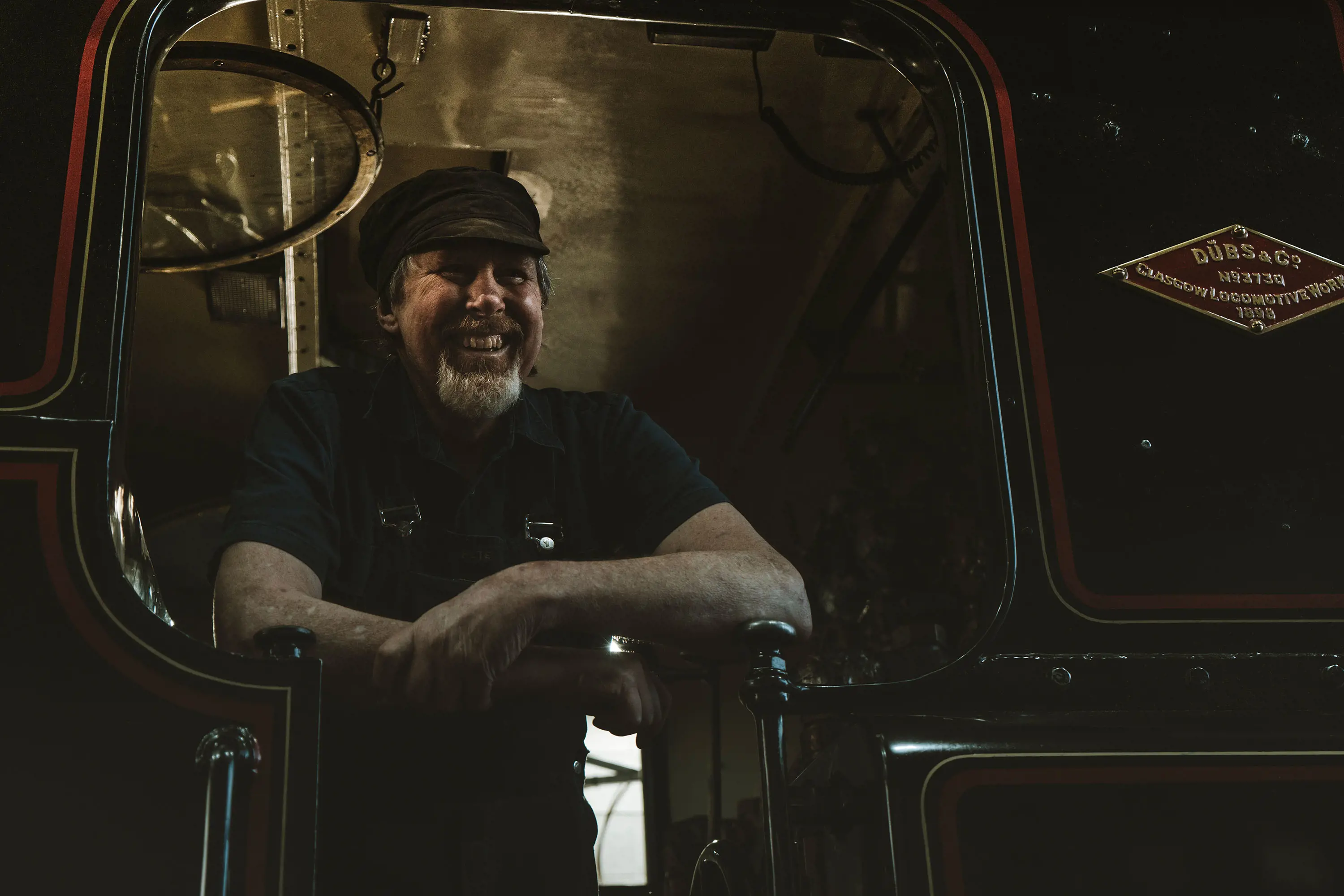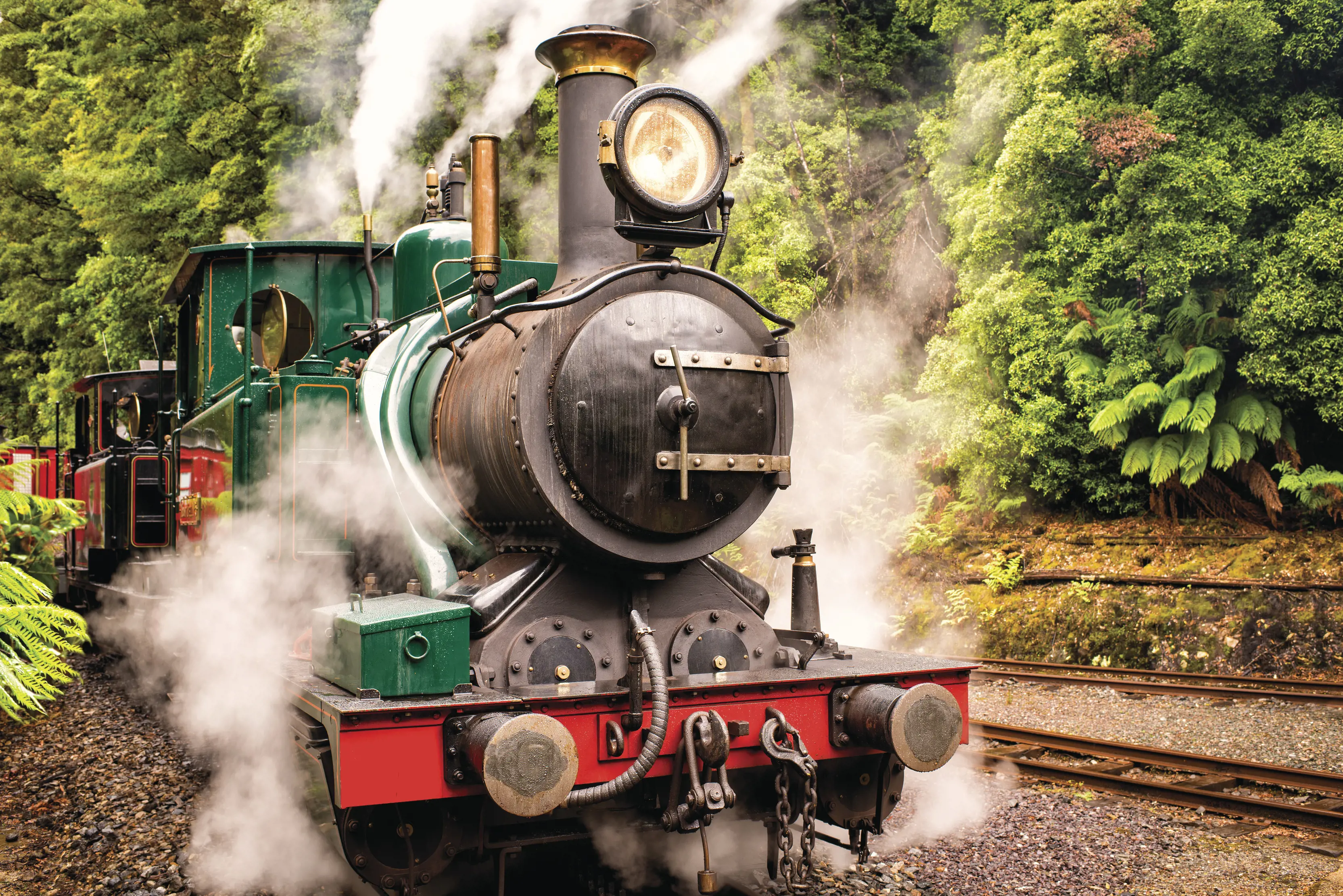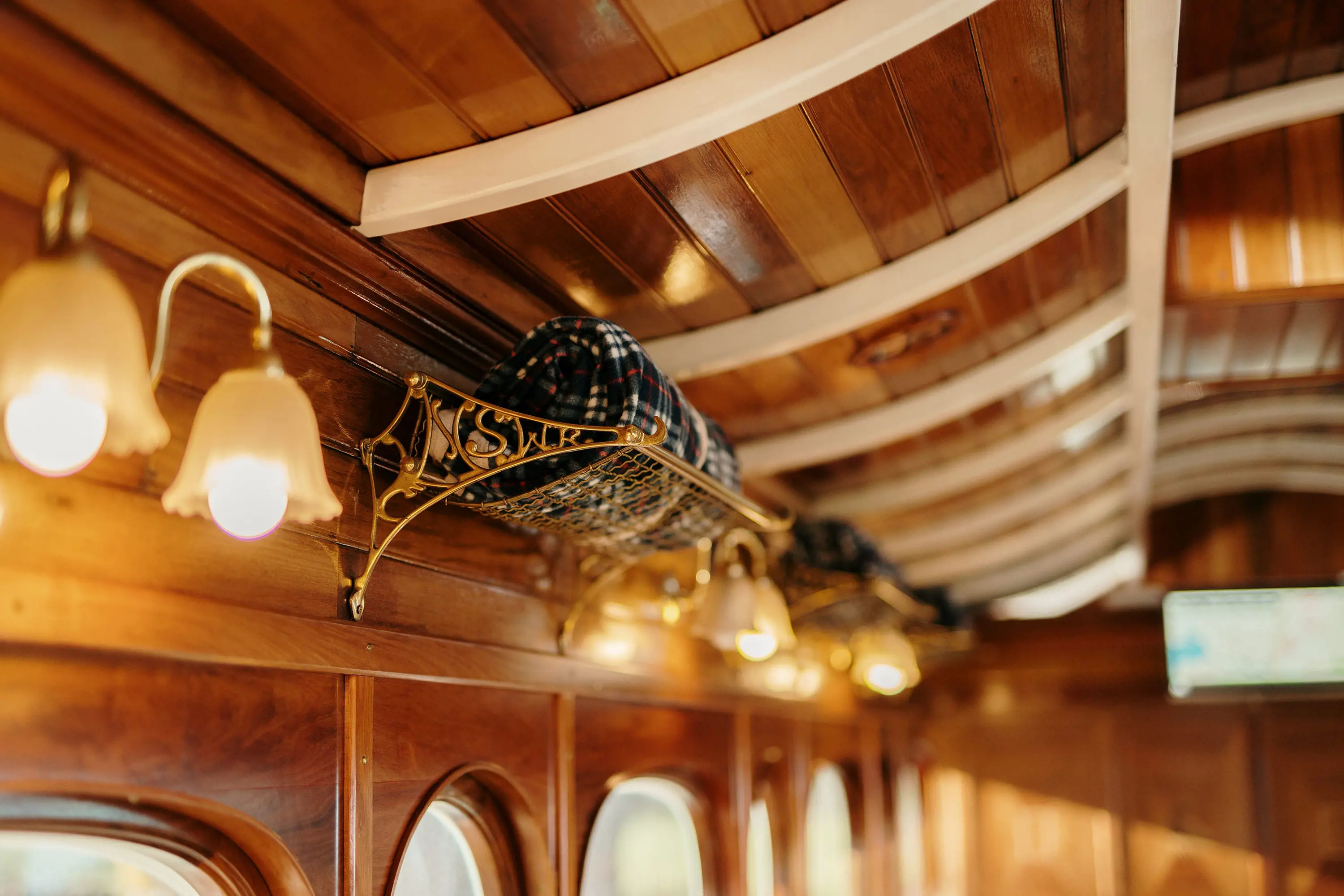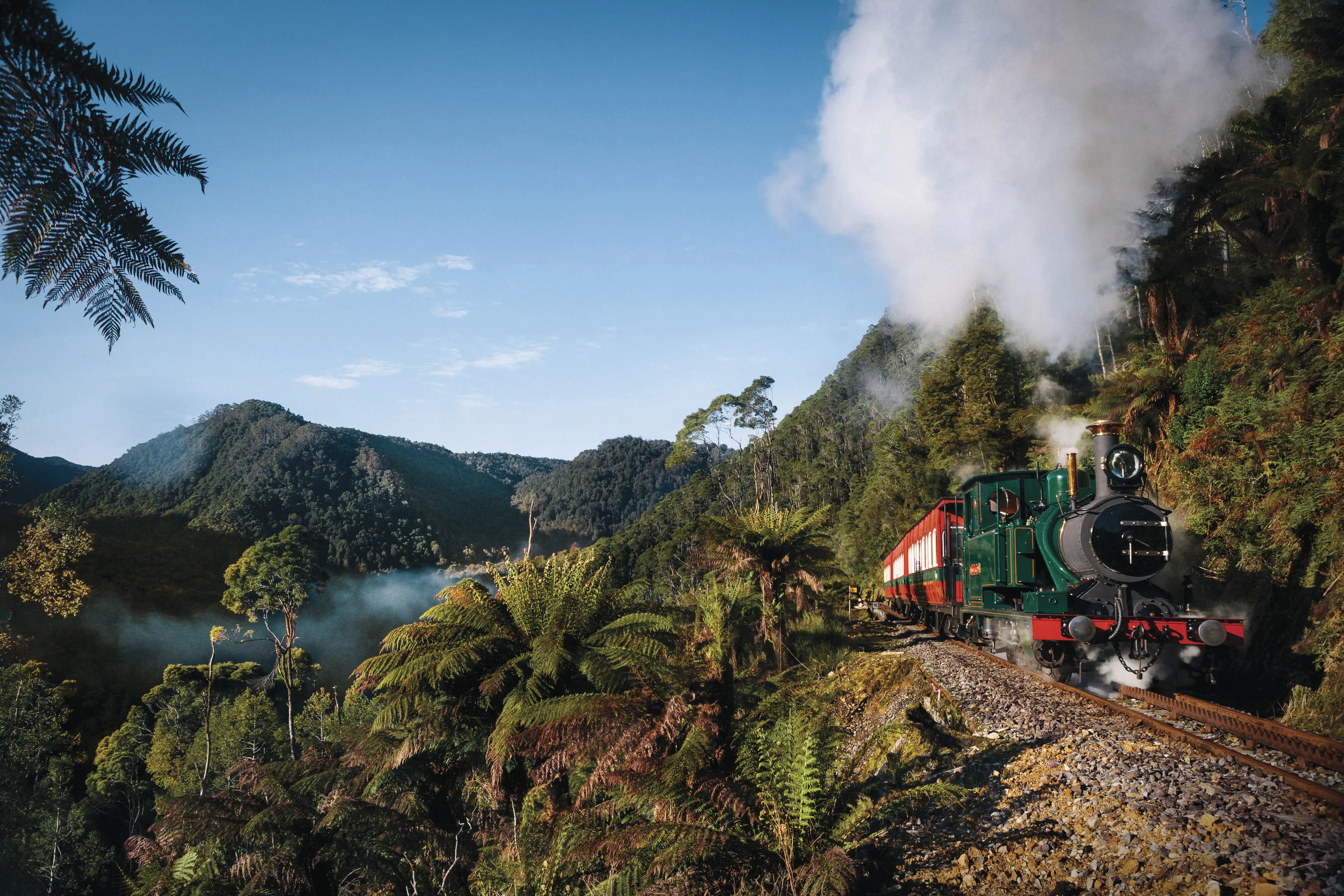
The West Coast Wilderness Railway is Tasmania's rainforest railway, blending a community’s deep ties to heritage with wilderness as old as time.
Stretching 35km between Queenstown and the port of Strahan, the West Coast Wilderness Railway chugs through verdant rainforest to reach remote stations buried deep in the wilderness. Out here, it's impossible not to feel invigorated by the environment – the air is crisp and the cool-temperate landscape is layered with enchanting shades of green.
The heritage railway was built in the late 19th century to transport Queenstown’s copper riches across some of the state’s toughest terrain. Today, a journey on the railway brings to life the stories surrounding this incredible feat of engineering (and the people who made it possible).
Every trip is different. It doesn’t matter how many times you do it, everything is different.
Rail Operations Supervisor, Mark Tregoning


In the 1890s, surveyors cut through hundreds of kilometres of unforgiving scrub and rainforest to find a route to Strahan. Using only picks and shovels, teams of workers pushed through brutal weather and seemingly impassable terrain to complete the line in 1899.
A Swiss-engineered Abt Rack and Pinion system, with a central cog under the locomotive engaging the teeth of a “rack”, was installed on the steep slopes of Rinadeena Saddle, allowing trains to drag themselves up and over the one-in-16 gradient.
“Back in those days, even a horse trail wasn’t an alternative because of the terrain,” says Rail Operations Supervisor Mark Tregoning. “People had to ship supplies, then use barges and carry in what they needed, including machinery parts and railway line. Although very costly to build, the railway at least gave them good access to the coast for exporting the products they mined.”
The much-loved railway closed in 1963 in favour of road transport. When the mine closed in 1994, the locals rallied to rebuild the then defunct railway into an enchanting travel experience to economically sustain the community. The resilient locals' memories of living and working along the railway endure to this day.


If this railway journey remains a challenging labour for its locomotives, it’s nothing of the sort for today’s passengers. The ride is a gentle journey through the cool-temperate rainforest that blankets Tasmania’s west coast, with knowledgeable guides on board to recount the stories of hardship from the railway’s construction and the men, women, and children who called the surrounding wilderness home.
The journey leads you to remote train stations that have faded into the forest, including Teepookana, a ghost town that was once the fourth-largest port in Tasmania and home to a double-storey pub.
Stretch your legs at these scenic stops, enjoying local produce tastings, photo opportunities and chances to pan for gold along the way. Informative interpretation at the stations complement the story-telling and live commentary from the onboard guides.
“Every trip is different,” says Tregoning. “It doesn’t matter how many times you do it, the weather conditions, the lighting...everything is different.
“As a driver, you certainly don’t have time to get bored. It requires great concentration driving this railway.”
Need to know
- West Coast Wilderness Railway is completing maintenance work along parts of its 35km track in 2024 and 2025. Journeys are available six days a week but may be adapted while works are underway. See the West Coast Wilderness Railway website for the latest updates.
- The West Coast Wilderness Railway runs a range of immersive trips from Strahan and Queenstown. Join the 2.5hr Teepookana and the King tour from Strahan, operated by an original heritage diesel locomotive. Or hop onboard the Rinadeena, Rack and Railway 3hr journey from Queenstown, powered by an Abt steam locomotive.
- Trains depart year-round from Strahan and Queenstown. Visit the West Coast Wilderness Railway website for up-to-date timetable information.
- Guests have a choice of carriages: heritage carriages provide heating and cooling, with booth seating, while wilderness carriages offer booth seats and tables, access to the carriage balcony and some food and drink options.
- Fuel up for the journey at Tracks Cafe in Queenstown Station, or Tracks on Point Cafe at Regatta Point Station, Strahan.
